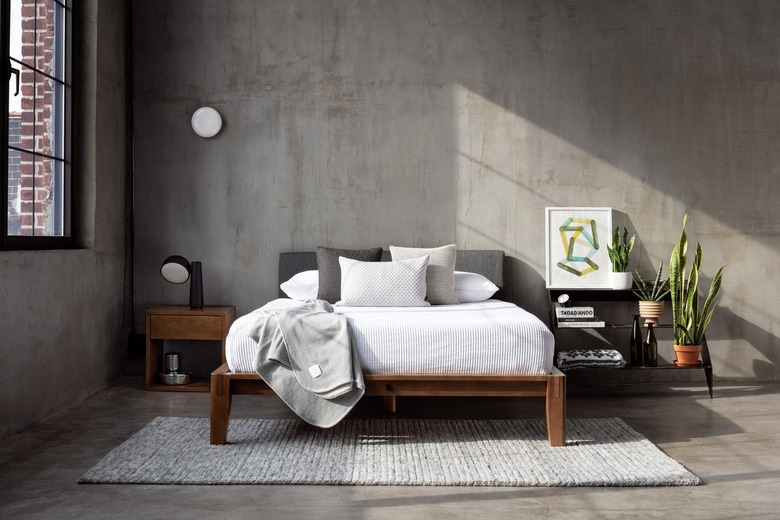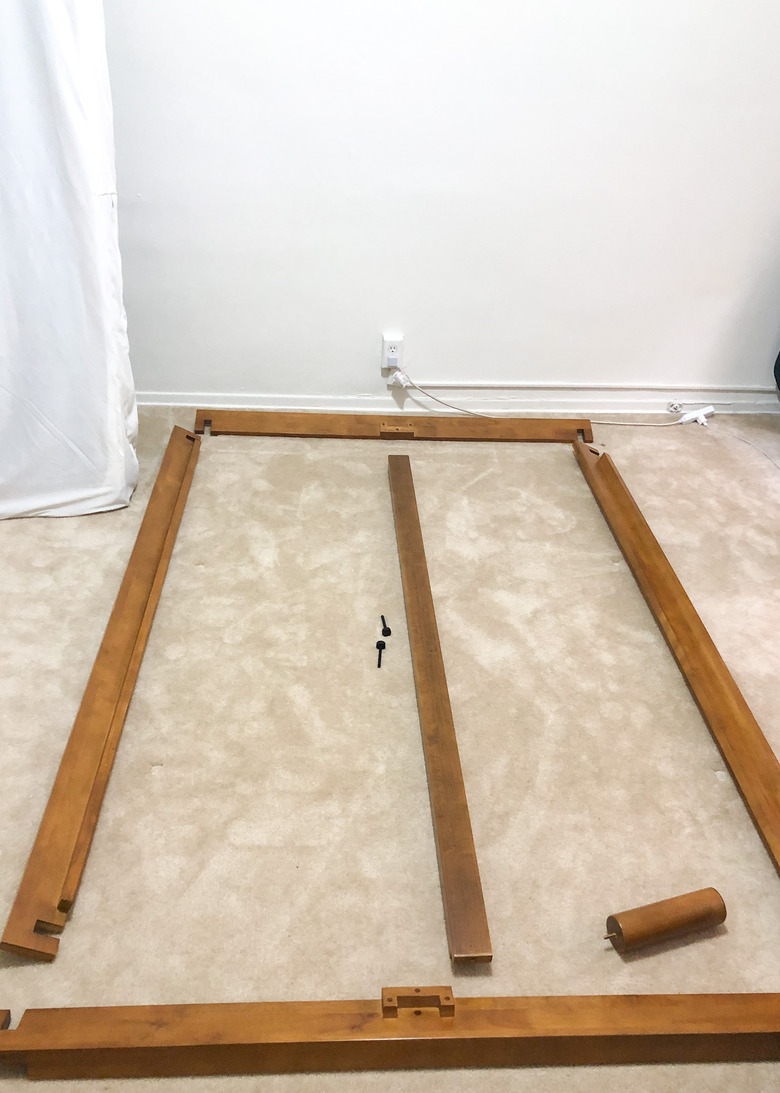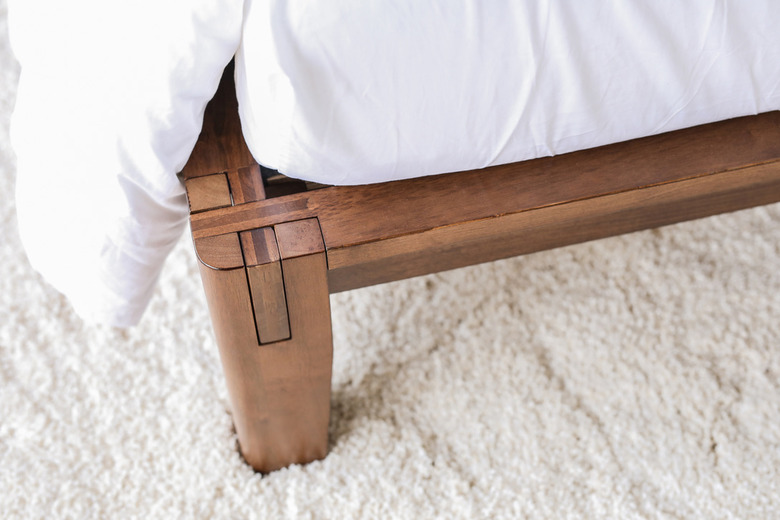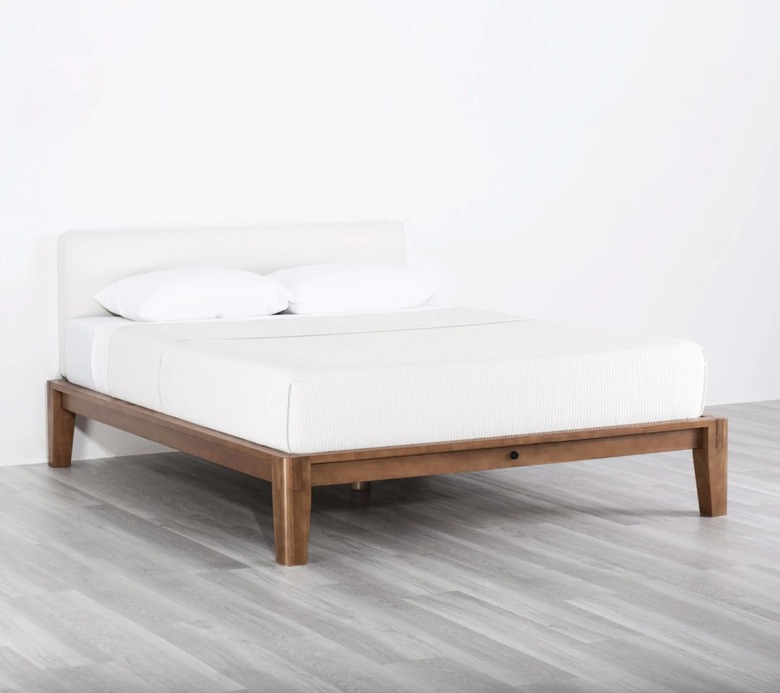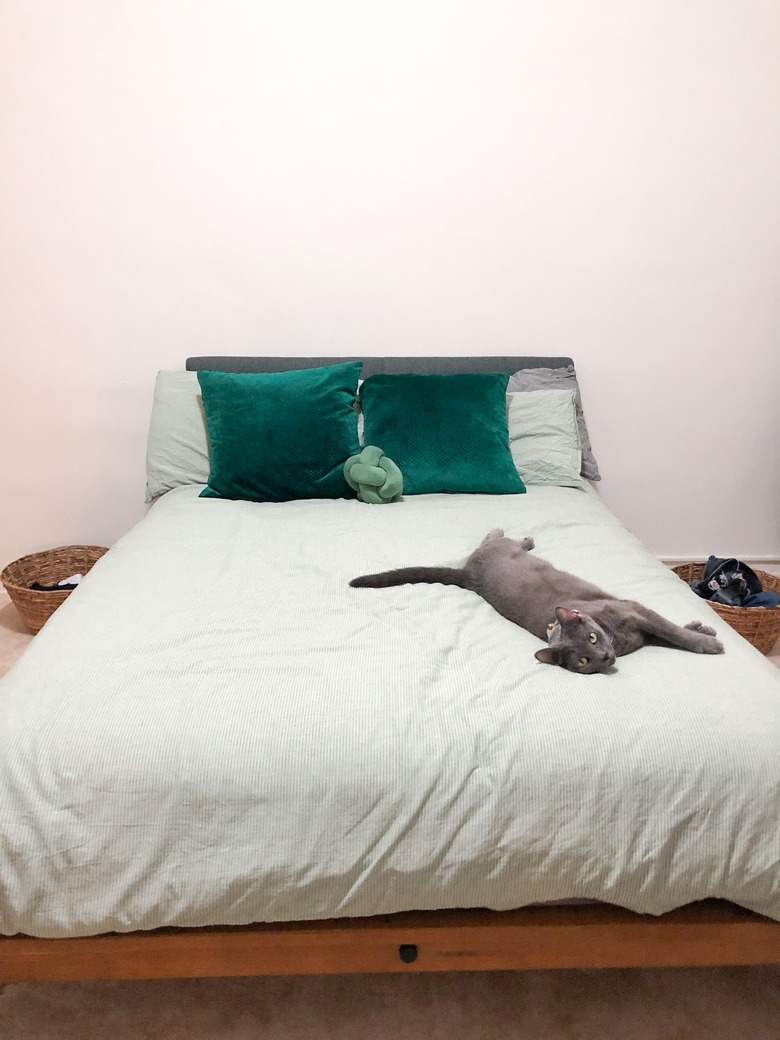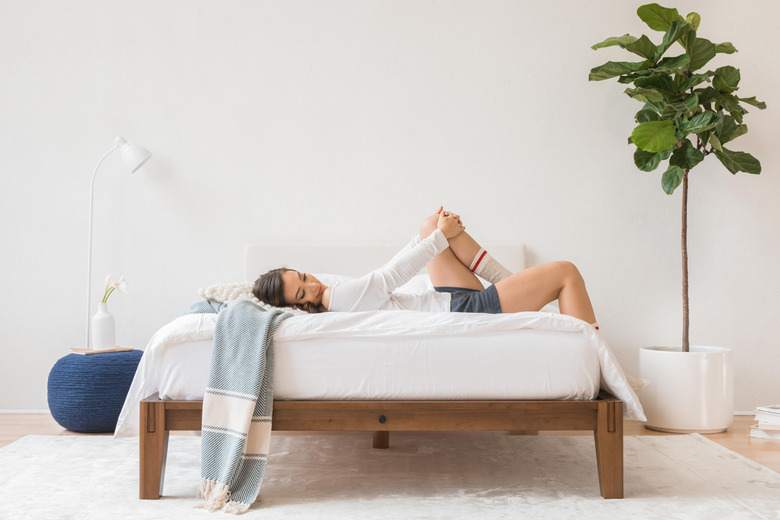I Tested This DTC Bed Frame That Requires Zero Tools
Many companies are attempting to re-imagine how we shop for our basic furniture. From promising an easier building process to a more personal shopping experience, brands are doing a lot to set themselves apart.
So when we heard about Thuma, a direct-to-consumer company wanting to improve the design of beds, we had to learn more. The company designed The Bed, a platform bed frame that promises to "elevate any bedroom." It uses Japanese joinery to create a product that requires no tools for assembly. The company also uses "environmentally-friendly, upcycled and repurposed rubberwood" in its designs.
(Full disclosure: I received The Bed in exchange for an honest review. However, these thoughts and opinions are my own and are not influenced by Thuma.)
At first, I was intimidated by the three large boxes that were leaning against the wall outside our door. But all the pieces were easy to take out and were cleverly packaged. My first impression was that the wood was smooth and high-quality. The walnut color made it look chic even before assembly.
The first step is to take all the pieces out and then lay down the skeleton of the bed frame, so you can figure out where you want it to stand in your space.
Because the frame doesn't require any tools, you basically fit each piece into the other. The instructions are easy to follow. It's definitely easier with two people since you start with one end of the longer legs, and the other person can hold the opposite end while you maneuver that in. At first, the end didn't quite go into its slot easily, but the weight of the other pieces coming together eventually smoothed things out.
The only hardware included was comprised of two large, black knobs (described as hand screws) that you can hand-turn into the wood. The best way I can describe it is that it's like working with giant puzzle pieces — and when you're done you have a bed frame.
Once you've got your foundation laid out, you unroll the slats and hook those into place as well. I was shocked that this was the last step. The frame looks super simple and light and I was almost afraid to put our full weight on it. But it totally withstood the test.
After your mattress is in place, the polyester PillowBoard goes on, as a sort of mini-headboard. It's very minimal but a nice addition, you just have to adjust it from time to time so it sits at the right position.
Overall, the design made our bedroom feel a lot more grown up. Our bed feels lower to the ground (which took some adjusting) but the space underneath still feels bigger because of the way the bed frame sits.
Within a couple weeks, our former box spring and bed frame were gone and we fully settled into this one. The final verdict came from our cat, who was more than happy to show her approval.
And five months later, we still love the frame. It's easy to clean and looks just as sleek as when we first put it together. There haven't been any issues with the joinery and it's a stable frame overall. Plus, we've got plenty of odds and ends under the bed — and the cat loves hiding there. I would definitely recommend it to anyone who wants a simple, high-quality platform bed frame. It's not friendly for all budgets, but it's definitely a solid piece for someone who wants to invest in it.
The Bed starts at $795 for a twin size. You can test out the bed frame for 100 days and return it if you don't love it (just be sure to keep the original boxes). It's available in walnut (which is what I tested) as well as natural. And bonus: It's GREENGUARD Gold Certified, meeting the standards for the label as related to low levels of emissions.
